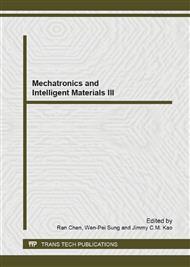p.593
p.597
p.601
p.609
p.613
p.618
p.623
p.629
p.635
A Research on Navigation Star Catalog Selection Algorithm Based on SVM
Abstract:
A navigation star catalog (NSC) selection algorithm via support vector machine (SVM) is proposed in this paper. The sphere spiral method is utilized to generate the sampling boresight directions by virtue of obtaining the uniform sampling data. Then the theory of regression analysis methods is adopted to extract the NSC, and an evenly distributed and small capacity NSC is obtained. Two criterions, namely a global criterion and a local criterion, are defined as the uniformity criteria to test the performance of the NSC generated. Simulations show that, compared with MFM, magnitude weighted method (MWM) and self-organizing algorithm(S-OA), the Boltzmann entropy (B.e) of SVM selection algorithm (SVM-SA) is the minimum, to 0.00207. Simultaneously, under the conditions such as the same field of view (FOV) and elimination of the hole, both the number of guide stars (NGS) and standard deviation (std) of SVM-SA is the least, respectively 7668 and 2.17. Consequently, the SVM-SA is optimal in terms of the NGS and the uniform distribution, and has also a strong adaptability.
Info:
Periodical:
Pages:
613-617
Citation:
Online since:
June 2013
Authors:
Price:
Сopyright:
© 2013 Trans Tech Publications Ltd. All Rights Reserved
Share:
Citation:


